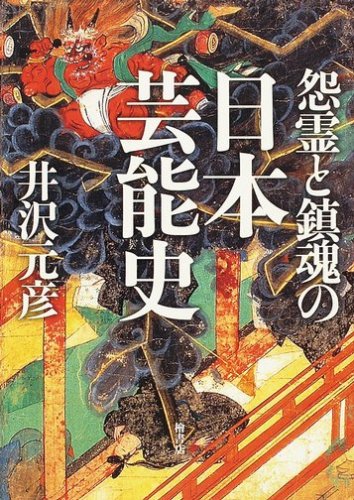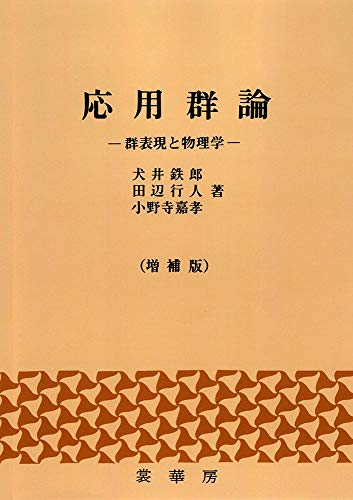1 0 0 0 OA 厳寒地に適用可能な積雪多層熱収支モデル
- 著者
- 山崎 剛
- 出版者
- The Japanese Society of Snow and Ice
- 雑誌
- 雪氷 (ISSN:03731006)
- 巻号頁・発行日
- vol.60, no.2, pp.131-141, 1998-03-15 (Released:2009-08-07)
- 参考文献数
- 33
- 被引用文献数
- 6 8
厳寒地に適用することを主目的として,積雪の鉛直1次元モデルを開発した.このモデルは気象データを入力して,積雪の温度,密度,含水量の鉛直分布を計算するものである.モデルは積雪を等間隔に切った単純な構造をもち,液体水の流下やアルベードは非常に簡単な扱いになっている.厳寒地でよく見られるしもざらめ雪を考慮するために,有効温度勾配を導入した.これにより熱伝導率や圧縮粘性係数のしもざらめ化による変化を取り入れた.また,降雪と降雨の比は湿球温度の関数として与えた.モデルの検証として,札幌と北海道東部のアメダス観測点でのひと冬通してのシミュレションを行った.札幌の計算では積雪深,積雪水量,雪温・密度の鉛直分布をほぼ再現できた.北海道東部では,積雪がしもざらめ化していく様子を計算できた.
1 0 0 0 OA 第三者言語接触場面におけるスピーチレベルシフトの機能
- 著者
- 髙橋 美奈子 谷部 弘子 本田 明子
- 出版者
- 現代日本語研究会
- 雑誌
- ことば (ISSN:03894878)
- 巻号頁・発行日
- vol.38, pp.46-62, 2017-12-31 (Released:2018-01-12)
- 参考文献数
- 16
母語話者と非母語話者によるインターアクション場面である接触場面の研究は、非母語話者の言語使用実態の把握に有効であると言われている。しかし、非母語話者同士の「第三者言語接触場面」において学習者がどのような言語行動を獲得するのかという観点からの実証的な研究は十分とは言えない。特に、コミュニケーションを円滑にするための多様なストラテジーとして機能しているスピーチレベルシフトは、日本語学習者には習得が困難だと言われている。そこで、本稿では、学部レベルの国費留学生16名の日本語母語話者との会話および非母語話者との会話の2場面における自然談話データを用いて、第三者言語接触場面にみられるスピーチレベルシフトの機能のバリエーションを明らかにした。さらに、非母語話者であっても、相手との言語能力の差や親疎関係の差により、相手言語接触場面と第三者言語接触場面とでは出現するスピーチレベルシフトの機能が異なる可能性も明らかになった。本稿では、日本語学習において第三者言語接触場面を活用する意義を指摘し、多様な日本語使用者による日本語談話の価値の問いなおしを試みた。
1 0 0 0 OA 明治の看護用語と現在の難解な介護用語
- 著者
- 遠藤 織枝
- 出版者
- 現代日本語研究会
- 雑誌
- ことば (ISSN:03894878)
- 巻号頁・発行日
- vol.38, pp.102-123, 2017-12-31 (Released:2018-01-12)
- 参考文献数
- 28
介護の分野に外国人が加わるようになって以来、介護の用語の平易化がいっそう求められるようになっている。本稿では、現在介護の現場で使われている難解な用語は、明治期の看護学教科書に由来することを想定して看護学草創期の教科書に基づく用語の調査を行った。その結果、今回対象とした「臥床・汚染・頻回」の3語については、看護学の初めのころから使用されている事実が確認できたが、その使用法が現在とは異なっていたことも明らかになった。伝統の踏襲として使用し続けられることが、形骸的な継承になっているとすれば、そうした難解な用語を使用し続けることの意味をあたらためて問い直す必要があると思われる。
1 0 0 0 OA 学業成績の原因帰属オーバーアチーバーとアンダーアチーバーに関連して
- 著者
- 速水 敏彦
- 出版者
- 一般社団法人 日本教育心理学会
- 雑誌
- 教育心理学研究 (ISSN:00215015)
- 巻号頁・発行日
- vol.29, no.1, pp.80-83, 1981-03-30 (Released:2013-02-19)
- 参考文献数
- 8
1 0 0 0 国名を受ける女性代名詞
- 著者
- 竹前 文夫
- 出版者
- 亜細亜大学
- 雑誌
- 亜細亜大学教養部紀要 (ISSN:03886603)
- 巻号頁・発行日
- vol.31, pp.108-92, 1985
1 0 0 0 OA 合理的期待形成と金融政策の有効性(西川元彦教授退職記念号)
- 著者
- 岸野 文雄 Fumio KISHINO
- 出版者
- 創価大学経済学会
- 雑誌
- 創価経済論集 (ISSN:03883027)
- 巻号頁・発行日
- vol.28, no.1, pp.15-35, 1999-03-01
1 0 0 0 OA 金融危機下の日銀の金融政策, 建部正義著, 中央大学出版部, 2010年
- 著者
- 前畑 雪彦
- 出版者
- 経済理論学会
- 雑誌
- 季刊経済理論 (ISSN:18825184)
- 巻号頁・発行日
- vol.48, no.1, pp.86-88, 2011-04-20 (Released:2017-04-25)
1 0 0 0 カオスとロゴス : chaosとlogos
- 著者
- ロゴスの会 [編集]
- 出版者
- ロゴス社
- 巻号頁・発行日
- 1995
- 著者
- 建部 正義
- 出版者
- 経済理論学会
- 雑誌
- 季刊経済理論 (ISSN:18825184)
- 巻号頁・発行日
- vol.51, no.3, pp.101-104, 2014-10-20 (Released:2017-04-25)
1 0 0 0 OA 21世紀型世界経済危機と金融政策, 建部正義著, [新日本出版社, 2013年]
- 著者
- 米田 貢
- 出版者
- 経済理論学会
- 雑誌
- 季刊経済理論 (ISSN:18825184)
- 巻号頁・発行日
- vol.50, no.4, pp.117-120, 2014-01-20 (Released:2017-04-25)
1 0 0 0 怨霊と鎮魂の日本芸能史
- 著者
- 河合 正樹 益子 典文
- 出版者
- 岐阜大学
- 雑誌
- 岐阜大学カリキュラム開発研究 (ISSN:02853566)
- 巻号頁・発行日
- vol.26, no.1, pp.124-137, 2009-03
1 0 0 0 IR 幼児期における科学的萌芽に関する一考察(1)5歳児におけるゾウリムシの観察を通して
- 著者
- 筒井 愛知 岡野 聡子 平松 茂
- 出版者
- 環太平洋大学
- 雑誌
- 環太平洋大学研究紀要 (ISSN:1882479X)
- 巻号頁・発行日
- no.7, pp.97-105, 2013
1 0 0 0 OA フジカラー「写ルンです」開発ストーリー
- 著者
- 持田 光義
- 出版者
- 一般社団法人 映像情報メディア学会
- 雑誌
- 映像情報メディア学会誌 (ISSN:13426907)
- 巻号頁・発行日
- vol.52, no.11, pp.1585-1588, 1998-11-20 (Released:2011-03-14)
- 参考文献数
- 2
1 0 0 0 OA 婦人下着の着方に関する研究
- 著者
- 中橋 美智子 鈴木 志津子 比田井 敬子 渡辺 ミチ
- 出版者
- The Japan Society of Home Economics
- 雑誌
- 家政学雑誌 (ISSN:04499069)
- 巻号頁・発行日
- vol.19, no.1, pp.31-38, 1968-02-20 (Released:2010-03-09)
- 参考文献数
- 3
1 0 0 0 OA 1204年の十字軍によるツァリグラード征服の物語
- 著者
- 三浦 清美 平野 智洋
- 出版者
- 東京大学大学院人文社会系研究科スラヴ語スラヴ文学研究室
- 雑誌
- Slavistika : 東京大学大学院人文社会系研究科スラヴ語スラヴ文学研究室年報
- 巻号頁・発行日
- vol.32, pp.323-342, 2016
[翻訳・解説]
1 0 0 0 OA 學校體育舞踊集第二輯 澁井二夫編 吹奏樂 君ヶ代行進国
1 0 0 0 OA 50年代イタリアの欧州政策:「例外的」なミドル・パワーの統合への対応
- 著者
- 八十田 博人
- 出版者
- 日本EU学会
- 雑誌
- 日本EU学会年報 (ISSN:18843123)
- 巻号頁・発行日
- vol.2001, no.21, pp.64-86,251, 2001-09-30 (Released:2010-05-21)
Italian European policy is often described as “federalistic”. Recent studies, however, have endeavored to explain the reason of the double language of Italian Europeanism; its federalist rhetoric and its pursuit of own national interest. These studies reveal how pragmatically the Italian government has used European Integration as an instrument of nation-building.The priorities of Italian foreign policy after the Second World War were to regain an equal status among other western European states and to resolve its domestic socio-economic problems at the European level. Postwar Italy was, however, compelled to confront the Cold War with scarce diplomatic resources. Military involvement was severely limited by the socalled “punitive” peace treaty and by domestic tendencies towards neutralism.The project of a comprehensive European political community by De Gasperi in the early years of the 1950s was an effort to incorporate the EDC into a more peaceful grand design rather than a military alliance. This coincided with another Italian insistence on the reinforcement of the OEEC with a hope for a resolution of its economic problems, such as unemployment and emigration. In both cases, Italy used the American support for European integration as a leverage to cover its unique and weak position.The exceptional treatments for fragile Italian steel industry under the ECSC were guaranteed mainly by France. Generally, Member states were so reluctant to accept other Italian demands, such as the subsidies for the Italian steel and the improvement of the working conditions of Italian miners in Belgium, that Italy needed the intervention of the High Authority. Italy's preference for a supranational community can be well explained by the fact.In the domestic process, the role of the technocrats of the Bank of Italy and the IRI and the influence of some leading figures of secular parties (PLI, PSDI, PRI) were decisive. This “centrist” era is highly marked as an age of technocrats, which has revived forty years later in the formation of “technocratic” governments of the 1990s.
1 0 0 0 応用群論 : 群表現と物理学
- 著者
- 犬井鉄郎 田辺行人 小野寺嘉孝共著
- 出版者
- 裳華房
- 巻号頁・発行日
- 1980








